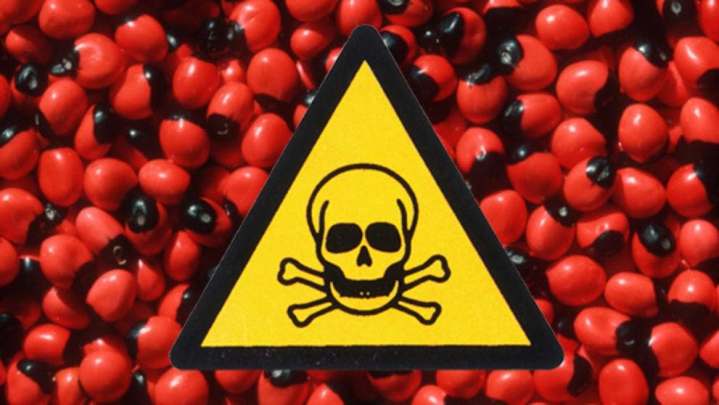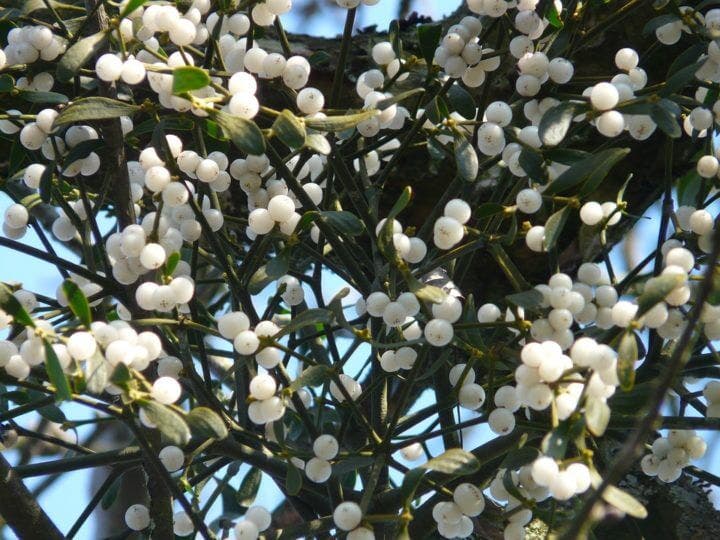Berries are a type of fruit that is very delicious, nutritious and easy to find in different types of environments. However, there are several varieties of wild berries that contain toxic compounds that can affect people’s health.
If these berries are consumed in large quantities, they can cause various symptoms, from simple discomfort to fatal effects. That is why it is important to know the 8 types of poisonous berries that you should avoid trying , especially for the sake of your health.

8 types of poisonous berries
1. Holly berries
This small variety of berries contain a toxic compound known as saponin , which can cause various symptoms such as nausea, vomiting, and stomach cramps. (Evens and Stellpflug, 2012).

2. Mistletoe berries
This popular Christmas plant is used in many countries, especially in cold environments, as part of the decoration, but it is very important to know that these plants have white berries that contain a toxic compound called foratoxin .
This toxic compound can cause stomach problems and slow heartbeats (bradycardia), as well as toxicity to the brain, kidneys, and adrenal glands. (Evens and Stellpflug, 2012).

3. Jerusalem cherries
These berries are also known as the Christmas orange. This plant has two-colored berries, usually red and yellow, which contain a toxic compound called solanine , which can cause various gastrointestinal infections, stomach cramps, and rapid heartbeat. (Evens and Stellpflug, 2012).

4. Sweet and sour berries
The berries of this plant also contain solanine. Visually they are often mistaken for Jerusalem cherries, and can cause side effects similar to the berries mentioned above. (Evens and Stellpflug, 2012).

5. Pokeweed berries
These berries are known to be purple in color, which gives them a very similar appearance to grapes; however, this species contains toxic compounds in the roots, leaves, stems and fruits.
This plant tends to become more toxic as it matures, and eating the berries is potentially fatal to any living organism. (Hamilton, Shih and Hoffman, 1995).

6. Ivy berries
Ivy berries are purple and black, or orange-yellow; that is, their colors may vary in these shades.
They also contain the toxin saponin, which can cause nausea, vomiting, and stomach cramps. (Gaillard et al., 2003).

7. Yew berries
These are a type of bright red berry. Their problem is that they contain potentially toxic seeds.
A study conducted showed that eating too many yew seeds causes seizures . (Pierog et al., 2009).

8. Virginia creeper berries
These berries are known as Virginia creepers, as the plant is similar to a climbing vine plant.
In your case, they contain toxic amounts of calcium oxalate. For that reason consuming large amounts of these berries can have toxic effects on the kidneys. (Botha and Penrith, 2009).

Conclution
Many wild berries are very delicious and safe to eat, but there are also species that are very similar to conventional berries, and that can be toxic to people.
These types of berries can not only cause side effects, but can also be fatal if consumed in large quantities. If you are not sure of the type of berries you are about to consume, it is better not to do so until you know what species it is.
References
- Botha, C. and Penrith, M. (2009). Potential plant poisonings in dogs and cats in southern Africa. Journal of the South African Veterinary Association . doi: 1019831265
- Evens, Z. and Stellpflug, S. (2012). Holiday plants with toxic misconceptions. The Western Journal of Emergency Medicine . doi: 10.5811 / westjem.2012.8.12572
- Gaillard, Y., Blaise, P., Darré, A., Barbier, T. and Pépin, G. (2003). An unusual case of death: suffocation caused by leaves of common ivy (Hedera helix). Detection of hederacoside C, alpha-hederin, and hederagenin by LC-EI / MS-MS. Journal of Analytical Toxicology. doi: 1012820750
- Hamilton, R., Shih, R. and Hoffman, R. (1995). Mobitz type I heart block after pokeweed ingestion. Veterinary and Human Toxicology . doi: 107709598
- Pierog, J., Kane, B., Kane, K. and Donovan, J. (2009). Management of isolated yew berry toxicity with sodium bicarbonate: a case report in treatment efficacy. Journal of Medical Toxicology . doi: 1019415594